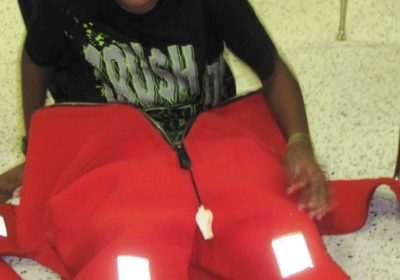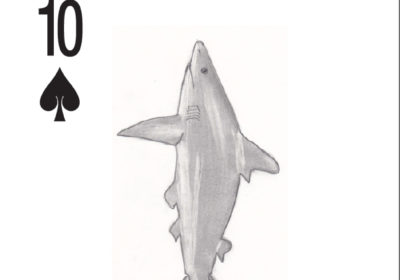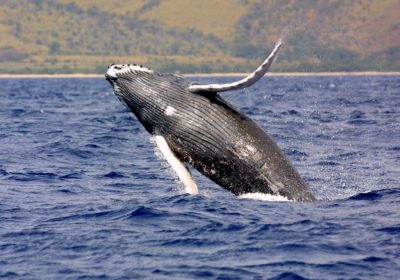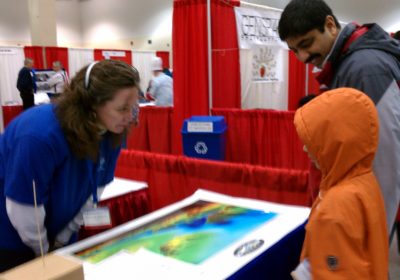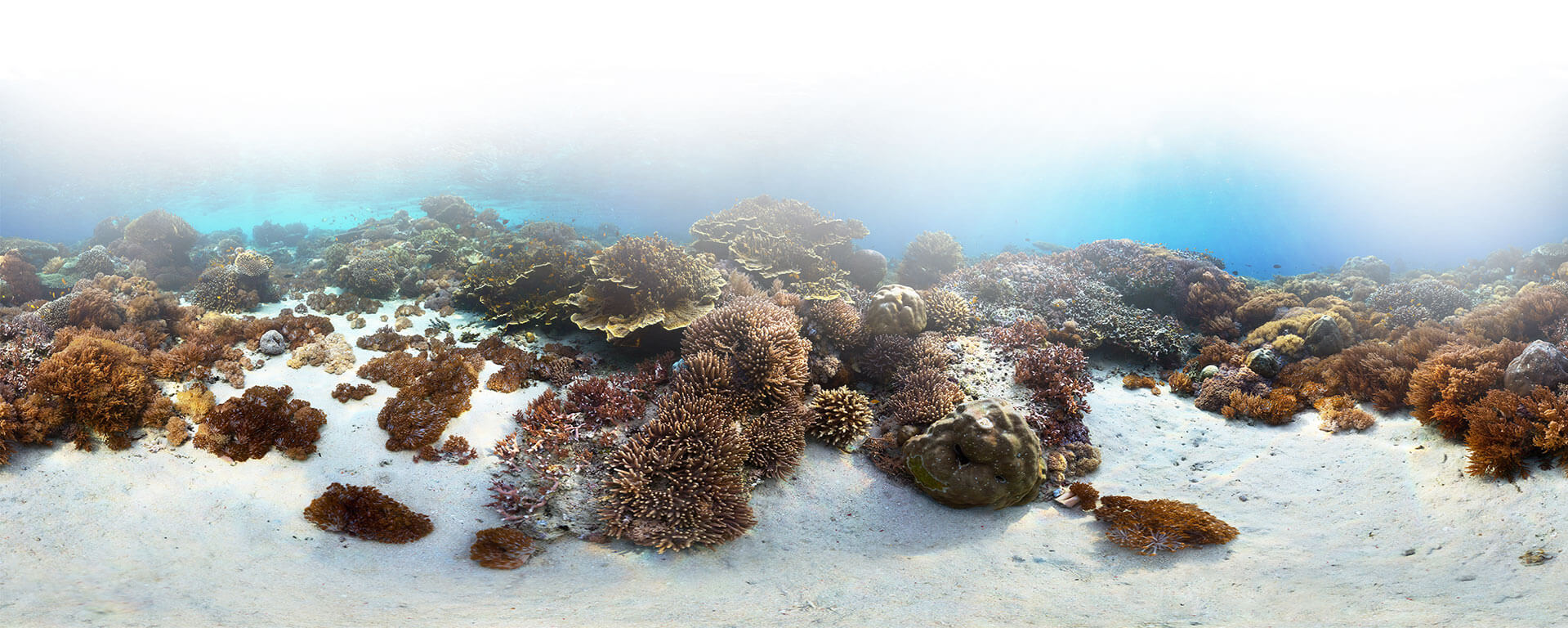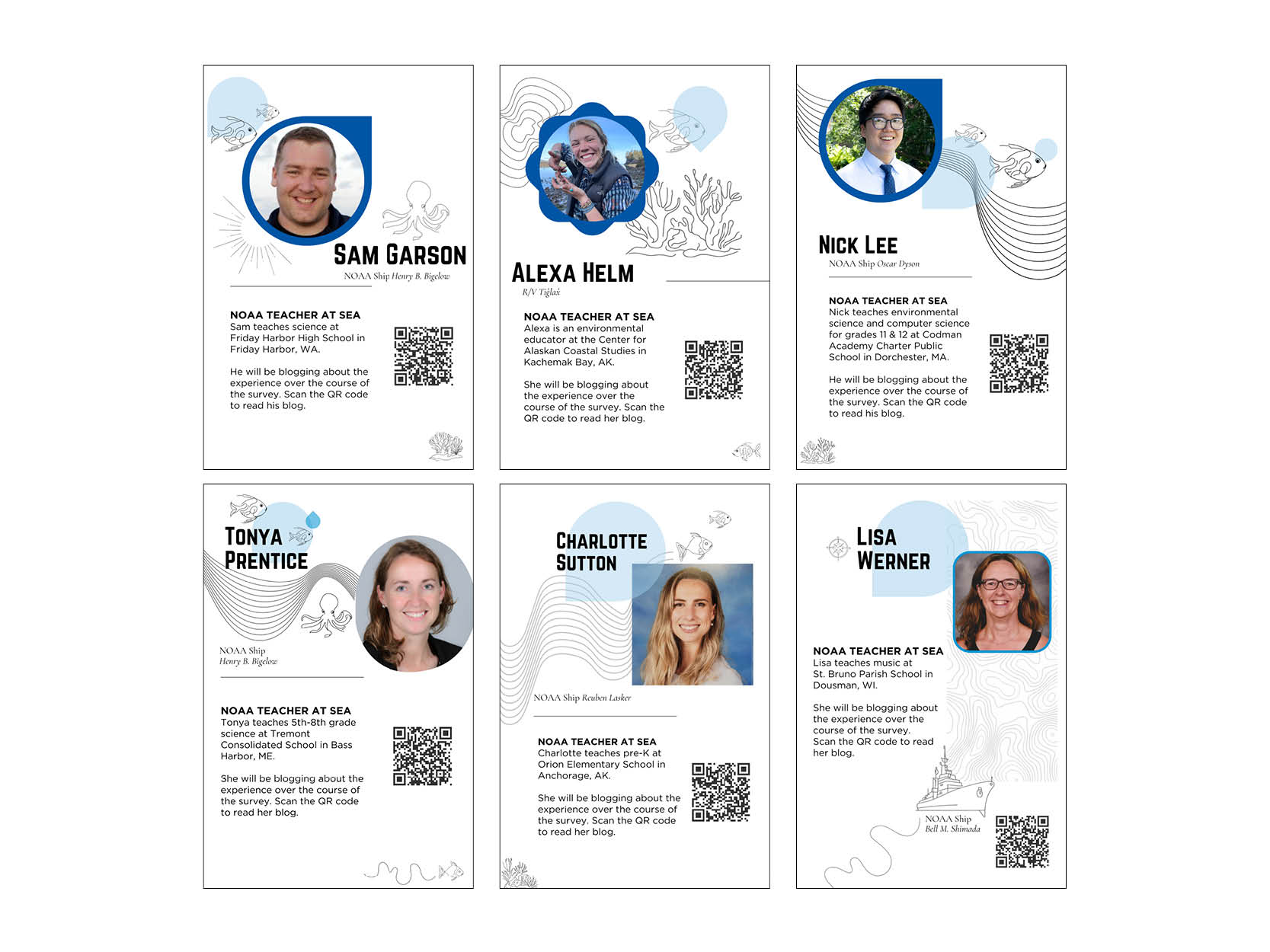
Introducing the Class of 2024
The 2024 NOAA Teacher at Sea Season has come to a close and preparation for the next season has already begun. This year we’re starting a new tradition by introducing our new alumni to the association by way of a spotlight.
We invite you to learn more about the class of 2024 by checking out the fun facts we’ve compiled from their blogs.
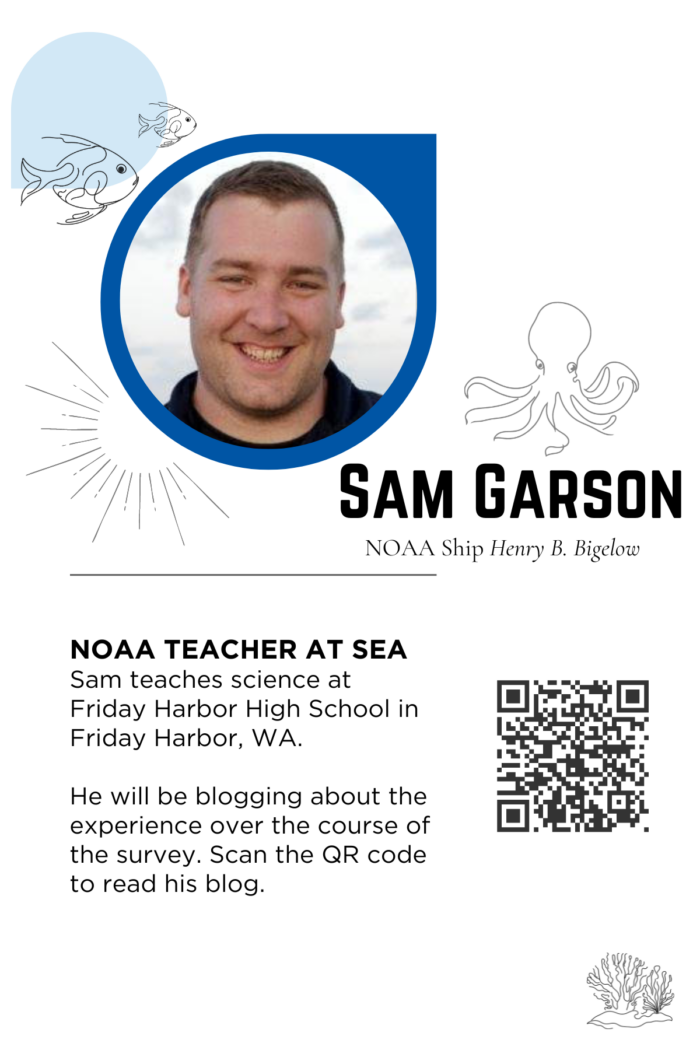
Fun Fact (Personal)
Sam was one of the inaugural members of the Ocean Exploration Trust’s (OET) Teacher at Sea Program, followed by 7 years of working with OET, helping to take students and teachers out to sea on the E/V Nautilus (the host for Live Ship-To-Shore Interactions).
Fun Fact (Onboard)
Scientists Katherine Bemis and Matthew Girard from the NOAA National Systematics Lab at the Smithsonian were on Sam’s leg of the cruise. In their work on fish genomics, Bemis and Girard utilize cutting-edge digital imagery techniques to capture detailed, high-resolution 3D images of fish specimens. These images, taken with specialized equipment, allow for the preservation of visual data without the need to retain large physical collections. Girard has been able to create digital models of fish that offer unprecedented detail in studying their external features.
Regarding this work, Sam reflected in his blogs “I also find the connection between the science of the catalogue and the artist nature of the documentation to be really amazing. Seeing the high-level imagery and beauty of the photos is something that again reminds me of the importance of arts being present and used in science.”
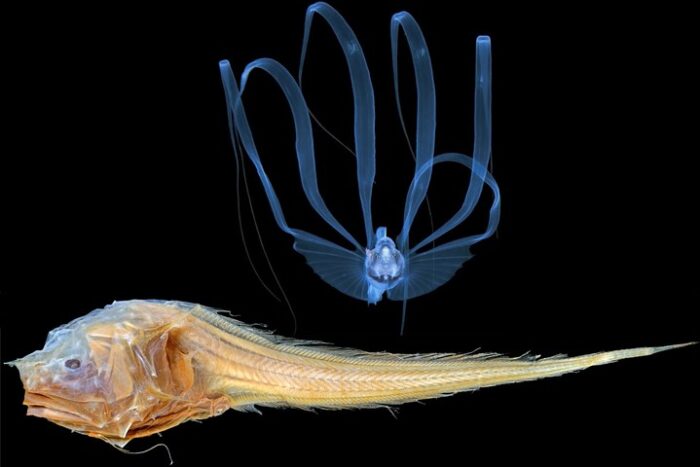
Fun Fact (Personal)
Fun Fact Personal: “During the summertime, I coordinate and lead overnight youth and family camps across Kachemak Bay from Homer, and during the school year I work as an educator leading a variety of day and overnight programs for students of all ages.” Alexa’s experience leading students in the fine art of fish dissection prepares her well for TAS.
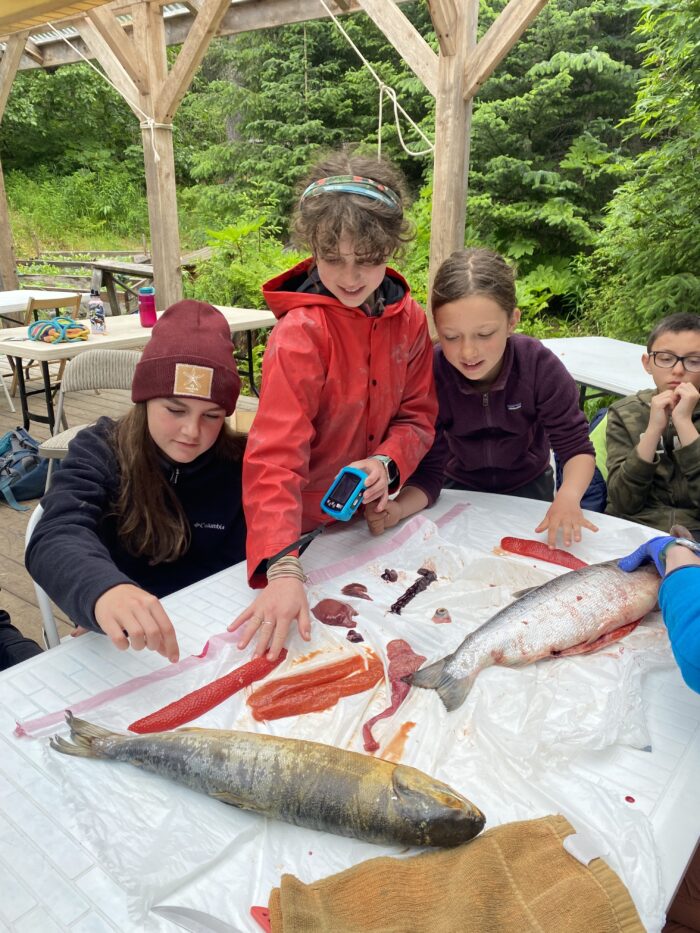
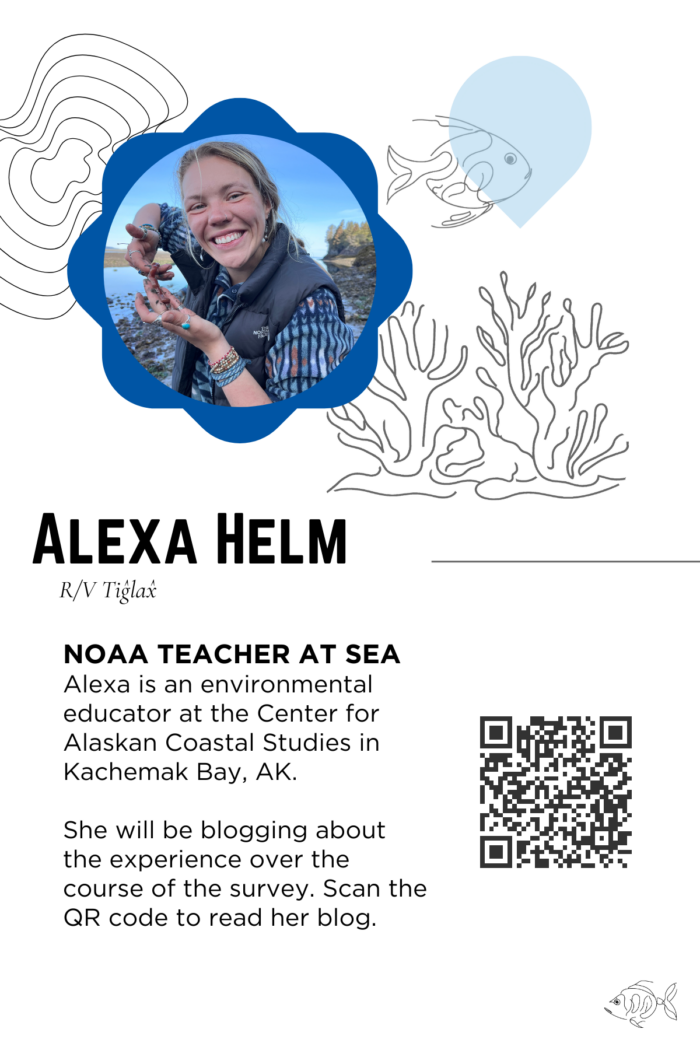
Fun Fact (Onboard)
Alexa had the opportunity to sail on a USFWS vessel. The R/V Tiĝlax̂ (TEKH-lah – Unangam Tunuu or Aleut for eagle) and its crew work for the Alaska Maritime Refuge as its research and transportation support vessel. In a season, the R/V Tiĝlax̂ may sail to islands in Southeast Alaska, the far western end of the Aleutian Chain, and into the Bering Sea, typically traveling, 15,000 to 20,000 nautical miles. The R/V Tiĝlax̂ conducts seabird, marine mammal, and fish surveys, as well as oceanographic studies.
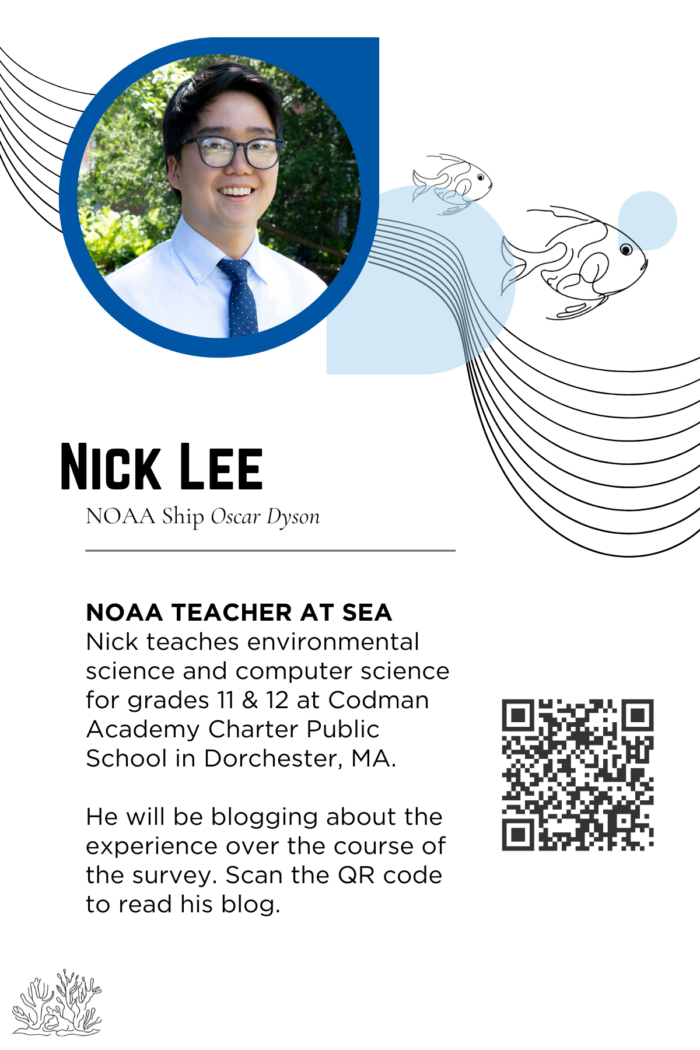
Fun Fact (Personal)
Before he launched a NOAA Adopt-a-Drifter Program buoy from NOAA Ship Oscar Dyson, Nick’s students built their own ocean drifter and deployed it with the help of a local fisherman off the coast of Massachusetts.
Last year, through the support of the Pat Cooke Foundation, Nick traveled to the Netherlands, where he spent two weeks working with a small-scale fishing company. There, he caught wild oysters and sea bass, and participated in all steps of seafood production, from catching and processing fish to selling direct to consumers in restaurants and markets.
Fun Fact (Onboard)
On his cruise, scientists were testing the PelagiCam, a camera that they lower over the side of the ship (without a net). They are hoping that PelagiCam may be able to collect species and length data, supplementing the data captured when processing fish from the trawl. If PelagiCam can record this data accurately, it could provide an efficient complement to trawling.
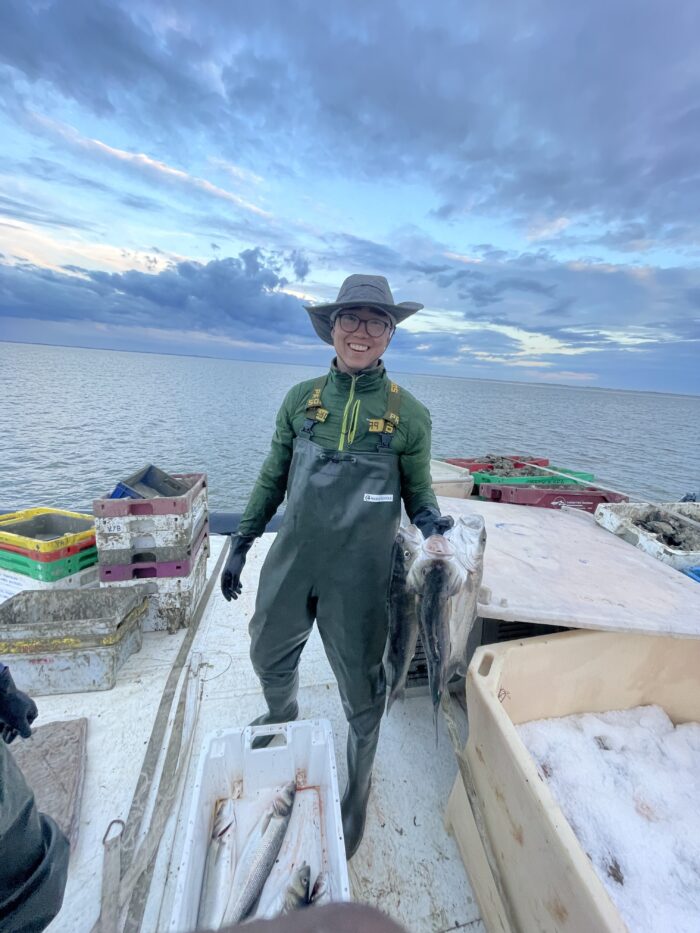
Fun Fact (Onboard)
As part of “Activities and Crafts with Katy,” Tonya made her own Acadian Redfish otolith earrings. Scientists use otoliths (ear bones), which are found right behind the skulls of bony fishes, as a way to age fish.
Tonya also had the chance to deploy two drifter buoys from NOAA Ship Henry B. Bigelow. Her school adopted the buoys and will track their locations through the NOAA Global Ocean Monitoring and Observing Program.
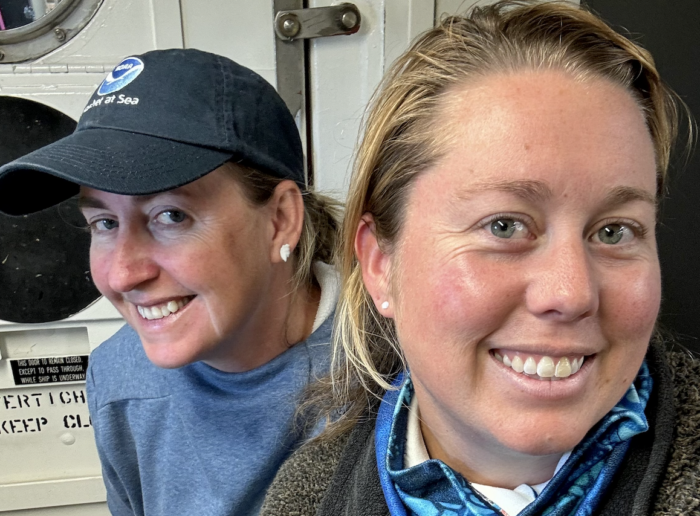
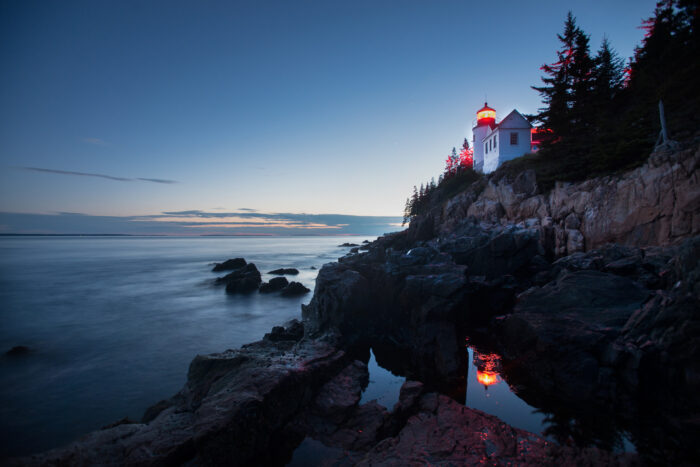
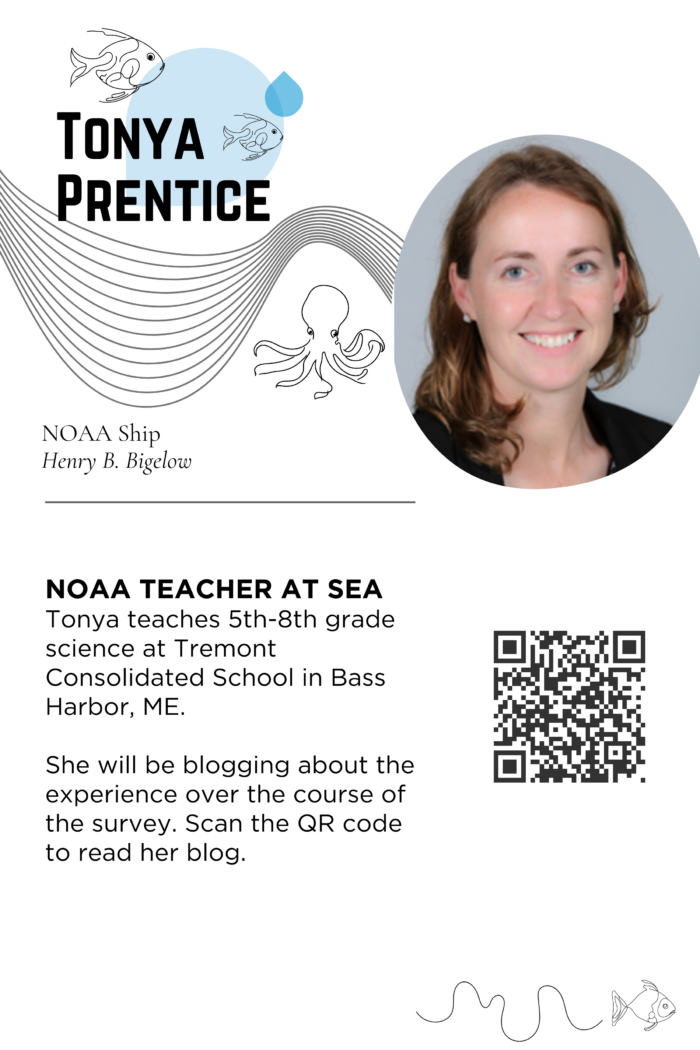
Fun Fact (Personal)
“My students are the next generation of environmental stewards. They live on an island, and many of their families are lobstermen and/or fishermen who rely on the health of the ocean. We are fortunate that our school is located in a beautiful area that borders Acadia National Park and is across the street from Bass Harbor. This allows me to take my students hiking, kayaking, snowshoeing, and exploring the ecosystems all around us.” (This area should be familiar to participants from our last Alumni Book Club, where we read The Secret Life of Lobsters, which took place in the waters surrounding the Cranberry Isles, southeast of Mount Desert Island/Acadia National Park.)
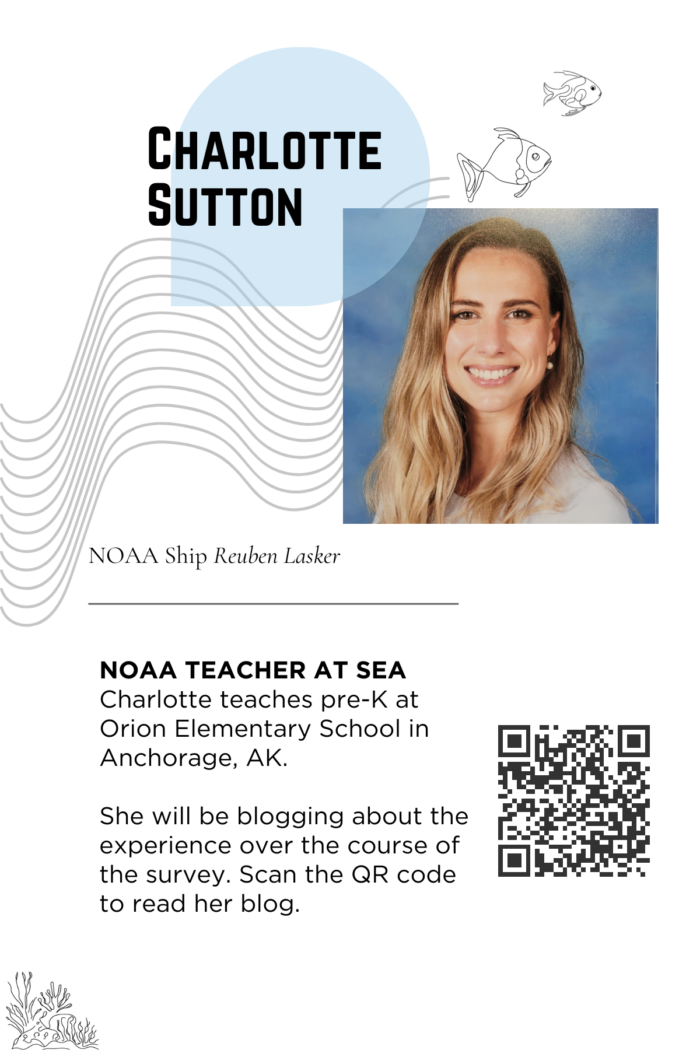
Fun Fact (Personal)
“Teaching in Alaska, students are surrounded by nature and wildlife. Orion Elementary is on Joint Base Elmendorf Richardson (JBER), which is located near both the Knik Arm (Dena’ina: Nuti) and the Turnagain Arm (Dena’ina: Tutl’uh) waterways that are part of the northwestern Gulf of Alaska, as well as many mountain ranges and forests. My students often tell me about the fish (especially salmon), beluga whales, moose, and bears that they see around the Anchorage area. I love to help students investigate the world around them by explicitly teaching and practicing the foundations of the scientific inquiry process to help them to become resilient problem solvers not just in preschool but in the years ahead.”
Fun Fact (Onboard)
When the NOAA Ship Reuben Lasker is trawling, there are numerous ways NOAA works to avoid harming marine mammals during the process. Science team members go on “Mammal Watch” from the ship’s bridge before and during a trawl. There must be no marine mammals within one nautical mile of the ship in order to proceed with trawling. Dolphin deterrent devices, also called “dolphin pingers”, are attached to the net and activate as soon as they hit water. They emit sounds to deter marine mammals from approaching the net and the devices themselves do not cause harm to marine animals.
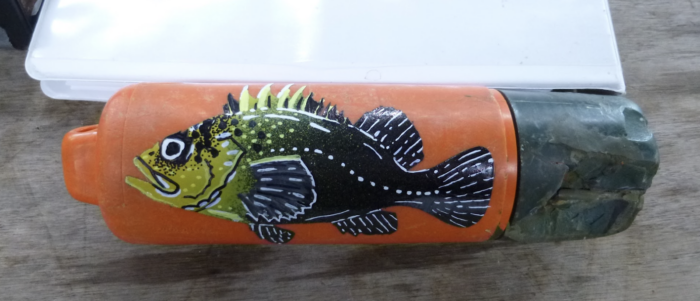
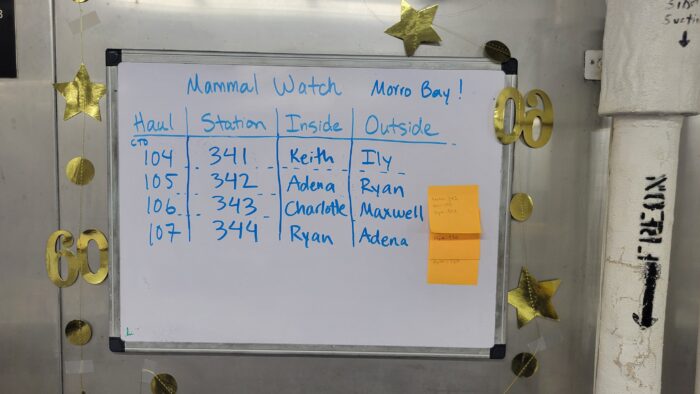
Fun Fact (Pre-departure)
While in port prior to departure, Lisa visited the Hatfield Marine Science Center at the University of Oregon. She came across an exhibit on a musical instrument that has been made from hollow bull kelp. There was a listening station where you could hear a hollowed bull kelp being played. The beauty of this instrument is that it is environmentally responsible – the bull kelp wash ashore regularly, so they do not need to be harvested. Kelp decays quickly, so the horn must be played within a week of it washing ashore. All the projects displayed showed the collaboration between music and ecology.
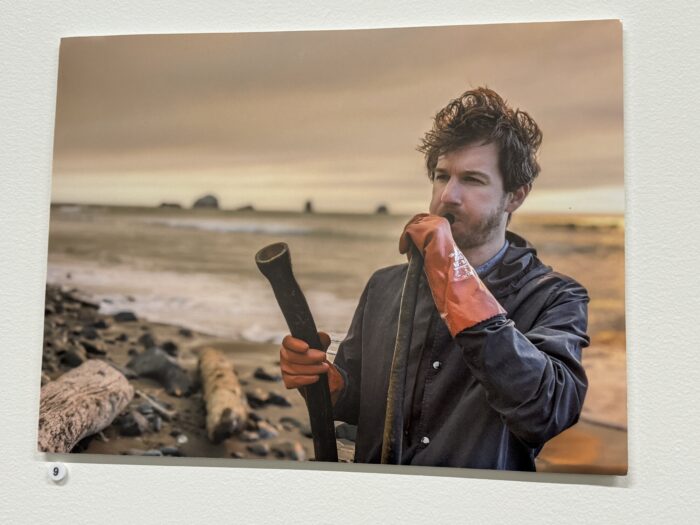
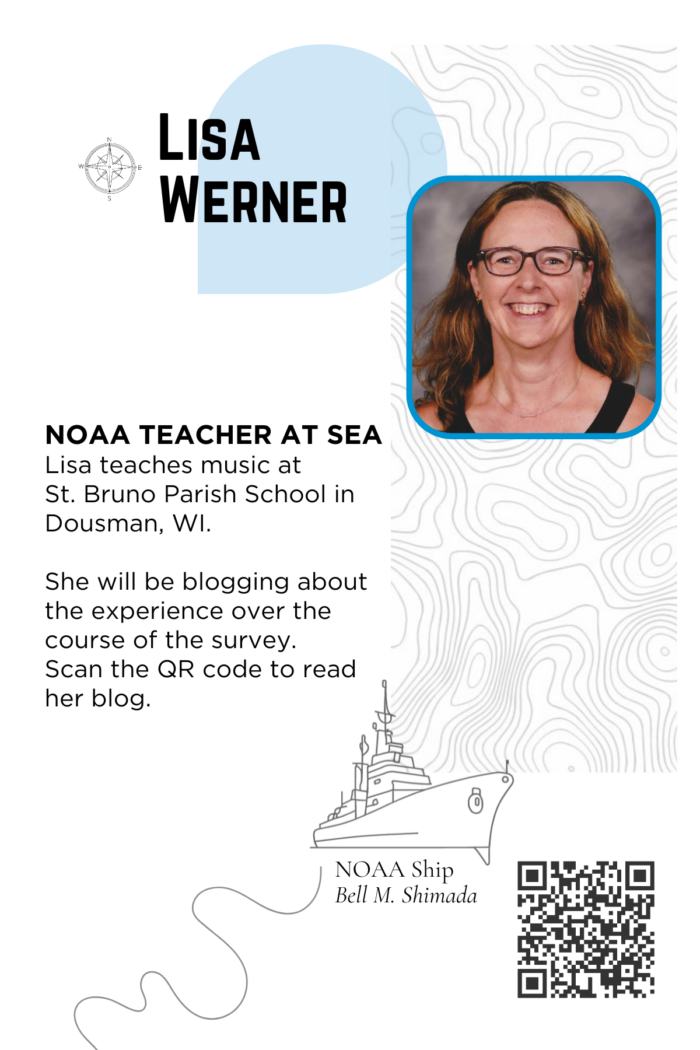
Fun Fact (Personal)
Lisa is passionate about showing students the link between music and other subjects. They have studied the effects of music and vibration on plant growth, and even designed experiments for a zero-gravity parabolic flight to show how music is interwoven into so many facets of our lives!
“I plan to share the data with the students and have them sonify the data into a musical composition. I want to record the sounds of the ship and the life at sea for the students to use in their musical composition recordings.”
(Photo Credits: NOAA Teacher at Sea)

